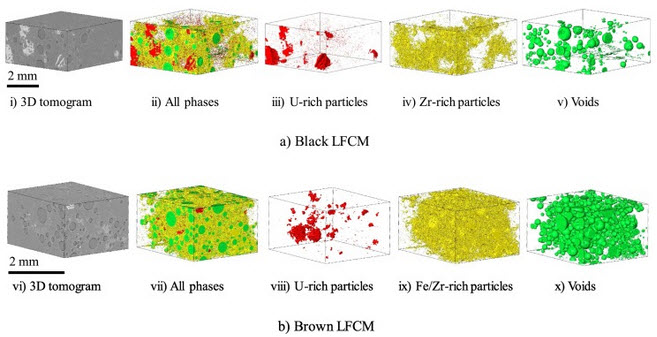Investigating the microstructure and mechanical behaviour of simulant “lava-like” fuel containing materials from the Chernobyl reactor unit 4 meltdown
Decommissioning of the damaged Chernobyl nuclear reactor Unit 4 is a top priority for the global community. Before such operations begin, it is crucial to understand the behaviour of the hazardous materials formed during the accident. Since those materials formed under extreme and mostly unquantified conditions, modelling alone is insufficient to accurately predict their physical, chemical and, predominantly, mechanical behaviour. Meanwhile, knowledge of the mechanical characteristics of those materials, such as their strength, is a priority before robotic systems are employed for retrieval and the force expected from them to be exerted is one of the key design questions. In this paper we target to measurement of the standard mechanical properties of the materials formed during the accident by testing small-scale, low radioactivity simulants.

A combined methodology using Hertzian indentation, synchrotron X-ray tomography and digital volume correlation (DVC), was adopted to estimate the mechanical properties. Displacement fields around the Hertzian indentation, performed in-situ in a synchrotron, were measured by analysing tomograms with DVC. The load applied during the indentation, combined with full-field displacement measured by DVC was used to estimate the mechanical properties, such as Young’s modulus and Poisson’s ratio of these hazardous materials.